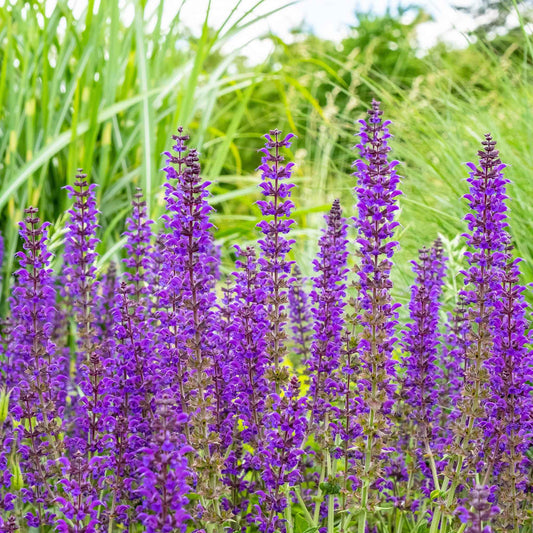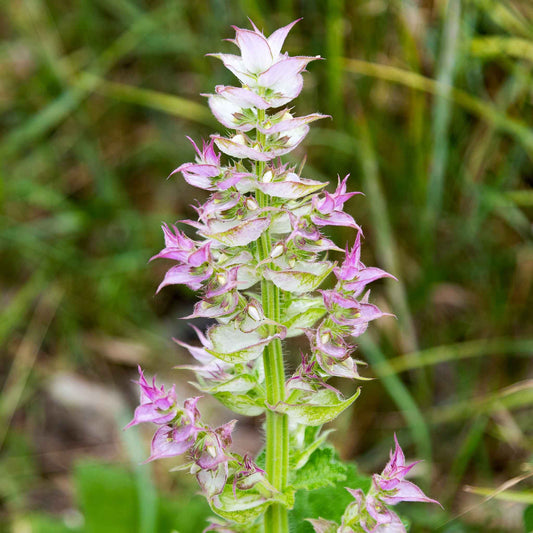-
main-collection-product-grid

Blue Sage Seeds
These azure blooms are a food source for endangered beesBlue Sage Seeds
These azure blooms are a food source for endangered beesRegular price As Low As $5.49Regular priceUnit price per -
main-collection-product-grid

Sage Seeds (Organic)
Commonly used to spice poultry, stuffing and sausagesSaleSage Seeds (Organic)
Commonly used to spice poultry, stuffing and sausagesRegular price As Low As $7.99Regular priceUnit price per$67.99Sale price As Low As $7.99Sale -
main-collection-product-grid

Sage Seeds
Versatile with a earthy and peppery flavor on broad leavesSage Seeds
Versatile with a earthy and peppery flavor on broad leavesRegular price As Low As $4.99Regular priceUnit price per -
main-collection-product-grid

Sage Seeds - Meadow Sage
Strikingly beautiful plant survives drought, neglect, rabbits, and deerSage Seeds - Meadow Sage
Strikingly beautiful plant survives drought, neglect, rabbits, and deerRegular price As Low As $5.49Regular priceUnit price per -
main-collection-product-grid

Clary Sage Seeds - White Swan
Elegant, silver spires are deer resistant and are said to have medicinal propertiesClary Sage Seeds - White Swan
Elegant, silver spires are deer resistant and are said to have medicinal propertiesRegular price As Low As $4.99Regular priceUnit price per -
main-collection-product-grid

Clary Sage Seeds - Bluish-White
This aromatic herb is winter hardy down to USDA hardiness zone 5Clary Sage Seeds - Bluish-White
This aromatic herb is winter hardy down to USDA hardiness zone 5Regular price As Low As $4.99Regular priceUnit price per -
main-collection-product-grid

Clary Sage Seeds - Pink Sundae
Stalks of these deeply-veined blooms make striking bouquet fillerClary Sage Seeds - Pink Sundae
Stalks of these deeply-veined blooms make striking bouquet fillerRegular price As Low As $4.99Regular priceUnit price per -
main-collection-product-grid

Scarlet Sage Seeds
Nectar-rich scarlet flowers are a beacon for hummingbirdsScarlet Sage Seeds
Nectar-rich scarlet flowers are a beacon for hummingbirdsRegular price As Low As $4.99Regular priceUnit price per -
main-collection-product-grid

Clary Sage Seeds - Tricolor Mix
Also called Painted Sage for its colorful flowersClary Sage Seeds - Tricolor Mix
Also called Painted Sage for its colorful flowersRegular price As Low As $4.99Regular priceUnit price per -
main-collection-product-grid

Clary Sage Seeds - Blue Monday
This wildflower has long been used to treat digestive issuesClary Sage Seeds - Blue Monday
This wildflower has long been used to treat digestive issuesRegular price As Low As $4.99Regular priceUnit price per -
main-collection-product-grid

Sage Seeds - Blaze of Fire
Compact plants are perfect for container gardensSage Seeds - Blaze of Fire
Compact plants are perfect for container gardensRegular price As Low As $6.99Regular priceUnit price per -
main-collection-product-grid

Sage Seeds - Big Blue
Fast-growing, low-maintenance cultivar doesn’t require deadheadingSage Seeds - Big Blue
Fast-growing, low-maintenance cultivar doesn’t require deadheadingRegular price $5.99Regular priceUnit price per -
main-collection-product-grid

Sage Seeds - Summer Jewel Lavender
2016 All America Selections award winnerSage Seeds - Summer Jewel Lavender
2016 All America Selections award winnerRegular price $4.99Regular priceUnit price per -
main-collection-product-grid

Sage Seeds - Estella Purple
Produces a profusion of flowers from spring through summerSage Seeds - Estella Purple
Produces a profusion of flowers from spring through summerRegular price $6.99Regular priceUnit price per -
main-collection-product-grid

Sage Seeds - Vista Mix
Brilliant colors on heat-tolerant and vigorous plantsSage Seeds - Vista Mix
Brilliant colors on heat-tolerant and vigorous plantsRegular price $5.99Regular priceUnit price per
Growing salvia (sage) seeds in your garden
- 15 salvia (sage) seed varieties
- Attracts pollinators through an extra long blooming season
- Drought-tolerant and deer-resistant
- Blazing spikes of purple, red, blue, pink, and white
what we love about salvia
The name Salvia is from the Latin verb salvere, meaning health, well-being, prosperity, and salvation. The plant has long been used as an herbal medicine and now makes regular appearances in gardens around the world. Salvia is incredibly resilient and is both heat and cold-tolerant, drought-tolerant, and deer-resistant to boot! Salvia (sage) seeds are hardy annuals in zones 3 through 9 with some varieties growing perennially in zones 7 and up. These flowers are easy to grow and maintain and will attract a great variety of pollinators to the garden. Salvia also makes an excellent cut flower.
how and when to plant salvia seeds
Direct seed salvia (sage) seeds after the threat of frost has passed and soil temps have reached 65°F. For earlier blooms, seed indoors roughly six to eight weeks before the final frost date. Salvia seeds typically take one to two weeks to germinate, depending on soil temperature, and do best in consistently moist potting media with temperatures between 65 and 85°F. Sow seeds on the surface of the soil and leave uncovered, as seeds prefer light to germinate. Maintaining high humidity and consistent temperatures will improve germination rates. Try covering your seed-starting container with a humidity dome or plastic wrap and misting regularly. Remove the cover once 10 to 15% of your seeds have germinated and continue misting regularly until most seeds have germinated. Once plants have three sets of true leaves, pot them into lager containers. Harden off plants for a week before transplanting them into the garden.
Salvia (sage) does best full sun but can tolerate light shade. It prefers nutrient-rich, well-drained soils. Provide 18 to 24 inches between plants, depending on varietal specifications (taller varieties usually require wider spacing). Flower spikes can grow as tall as three feet in one season!
caring for your salvia plants
Deadhead spent flowers to encourage continuous and extended blooming. Salvia (sage) plants may start to look tired come mid-summer. Cutting the plants back by one third can reinvigorate the plant and encourage the growth of new foliage and vibrant continuous blooming. Existing plants can be divided in the late winter/early spring in regions where they grows perennially (zones 7 to 9, depending on variety).
For more information about planting, growing, and caring for salvia (sage) seeds, see the Salvia (Sage) Seeds Planting Guide.














